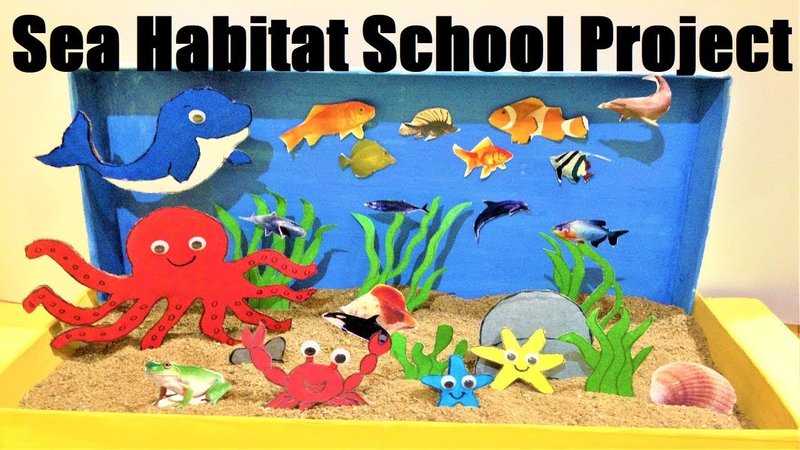
Imagine building a small world where inchworms can thrive, just like setting up a cozy corner in your house for a pet. You’ll want to think about their needs—food, shelter, and space. With a few simple materials and some creativity, you can create an engaging and educational habitat for your project. Let’s explore how you can build this fun little ecosystem step by step.
Gathering Materials for Your Inchworm Habitat
To get started, you’ll need some basic materials. Don’t worry; you likely have most of these items lying around your home or can easily pick them up at a local store. Here’s a handy list to guide you:
- A clear container (like a large jar or a small aquarium)
- Fresh leaves (to provide food)
- Moistened soil or dirt
- A few small branches or twigs (for shelter)
- Small rocks or gravel (for drainage)
Let’s break these down a bit. The clear container is crucial because it allows you to observe the inchworms without disturbing them. Fresh leaves are their primary food source, so you’ll want to gather a mix of plants they love, like oak or maple leaves. The moistened soil provides a natural ground cover that inchworms can burrow into.
Small branches or twigs create a comfy spot for inchworms to hide and explore, just like they would in their natural environment. Lastly, using small rocks or gravel at the bottom helps with drainage, keeping the habitat from becoming too soggy.
Designing the Habitat
Now that you’ve got your materials, it’s time to design the habitat. Think of this step as decorating your tiny home for your inchworm guests. Start by rinsing your clear container to make it nice and clean. Once it’s dry, sprinkle a layer of gravel at the bottom. This layer will act as a drainage system, so you don’t end up with a swampy mess.
Then, add a layer of moistened soil—about two to three inches deep should do the trick. This will serve as the main living and eating area for your inchworms. The soil should be damp but not soaking wet, kind of like a well-watered garden. After that, place a few leaves on top to give them their first meal.
You might also want to arrange small branches or twigs within the habitat to create hiding places. Inchworms love to climb and explore, so providing structures for them to navigate will make your habitat more engaging.
Introducing Inchworms to Their New Home
Once your habitat is all set up, it’s time to introduce the inchworms. You can find them in your backyard or a local park, usually on trees or bushes. When collecting them, be gentle! You don’t want to harm these little guys. Think of it as a mini treasure hunt—look for them on the undersides of leaves or in the crooks of branches.
When bringing your inchworms home, make sure to keep them in a small, breathable container (like a shoebox with holes) until you’re ready to place them in their new habitat. This helps them feel safe and reduces stress.
After you’ve added them to the habitat, give them some time to adjust. You might be wondering, “How many should I add?” A good rule of thumb is to start with about five to ten inchworms. This keeps the habitat from becoming overcrowded and allows you to observe their behaviors more easily.
Caring for Your Habitat
Caring for your inchworm habitat is vital for keeping your little guests happy and healthy. Remember, you’re responsible for creating a comfortable environment for them. Here are some tips on how to maintain it:
– Check the moisture level: Every few days, check the soil to ensure it’s still damp but not overly wet. If it’s getting dry, gently mist the soil with water. You want to mimic a natural environment as best as possible.
– Replace food regularly: Inchworms chow down on leaves, so be prepared to replace old or wilting leaves with fresh ones every week. This will not only keep them nourished but also make your habitat look lively.
– Clean the container: After a couple of weeks, you might notice some waste accumulating. Gently remove any waste or uneaten leaves to keep the environment clean. Just be careful not to disturb the inchworms too much while doing this.
Keeping an eye on your habitat will help you learn more about the inchworms’ lifecycle and behaviors. You’ll start to notice how they interact with each other and their environment, making the whole project even more rewarding.
Observing Inchworm Behavior
One of the most exciting parts of your inchworm project is observing how they behave. You might not realize it, but inchworms are pretty fascinating little creatures! They can be shy, often hiding on leaves or among branches during the day and becoming more active at night.
As you watch them, keep a journal of your observations. Note down their eating habits, how they move, and any interactions you see between them. You might even catch them inching along a branch or curling up when they feel threatened.
This observation not only enriches your project but also enhances your understanding of ecosystems as a whole. You never know—this could spark a lifelong interest in biology or environmental science!
Wrapping Up Your Inchworm Study Project
As your study project comes to a close, take some time to reflect on what you’ve learned. You’ve not only built an inchworm habitat but also created a mini ecosystem that can teach you and others about the importance of habitats in nature.
When it’s time to wrap things up, consider sharing your findings with classmates or family. You could even create a small presentation showcasing your inchworms and their habitat. Remember, the goal was to learn and have fun, and you did just that!
Building a habitat for an inchworm study is a hands-on way to explore the natural world. So, celebrate your efforts, and maybe even think about starting another nature project down the line. Who knows what other amazing creatures you could learn about next!

